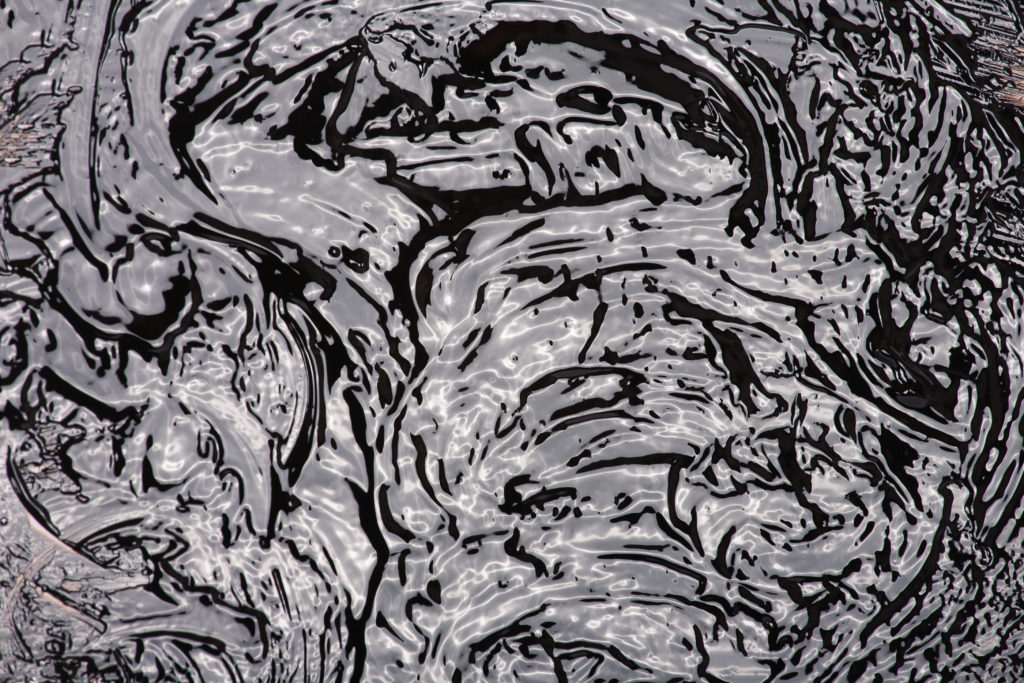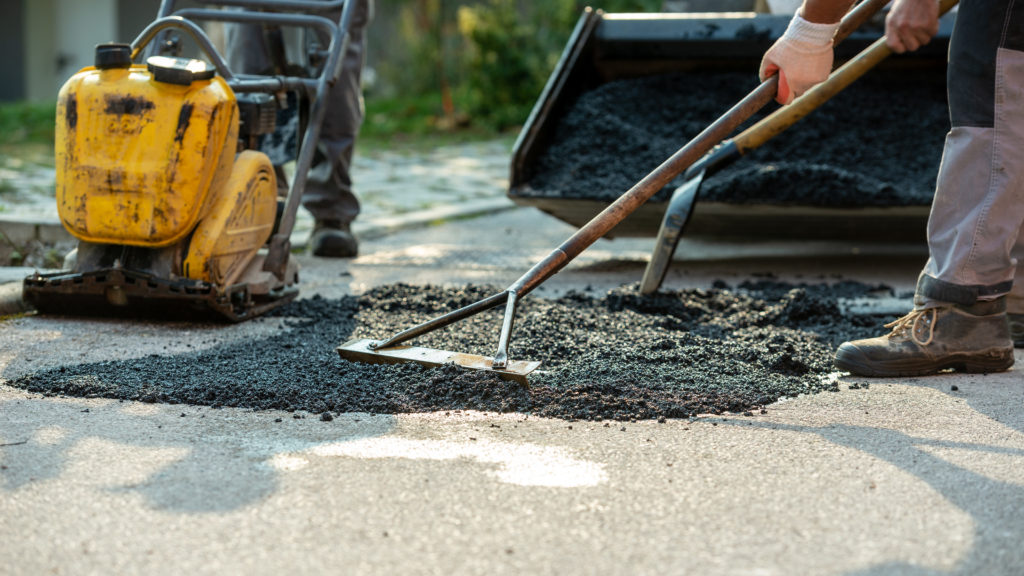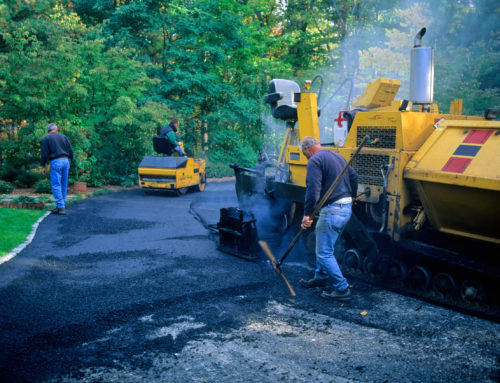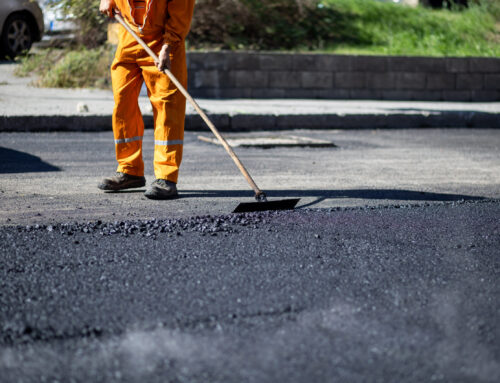Welcome back to another blog here at Sunrise Asphalt! It’s July, the temperatures are continuing to rise and, quite frankly, we’d rather be indoors right now so here we are, answering questions and deep diving into subjects of interest within our industry. This time around that means taking a look at what asphalt is made of and more!
A surprising number of people ask about what asphalt is made of exactly. It’s a fair enough question, after all pavement crisscrosses all over our city, country, heck the world! Like concrete, it’s a substance that our whole modern world is built out of, though many don’t realize what goes into it. If you’d like to know specifically what exactly is in the asphalt in roads, jump to ‘What is Asphalt Concrete?’ Without further preamble let’s get into…
What Asphalt is Made Of
 Asphalt (or bitumen if you’re on the other side of the pond) is a black, sticky liquid that is a semi-solid petroleum substance. It is naturally occurring, formed from the long-decayed remains of living things like algae. Heat, pressure, and a whole bunch of time makes those materials break down and change into asphalt. They are found in tar pits and oil sands.
Asphalt (or bitumen if you’re on the other side of the pond) is a black, sticky liquid that is a semi-solid petroleum substance. It is naturally occurring, formed from the long-decayed remains of living things like algae. Heat, pressure, and a whole bunch of time makes those materials break down and change into asphalt. They are found in tar pits and oil sands.
Asphalt normally features four main types of chemicals and compounds inside it:
- Naphthene aromatics
- Saturated hydrocarbons
- Polar aromatics
- Asphaltenes
Science! There is plenty more details to be found on each of those compounds, but for our purposes, we don’t need to go too much deeper into the chemistry!
Most of the asphalt used in paving and construction is refined from petroleum. 85% of all asphalt used in the US is used for making asphalt concrete for road surfaces.
But wait, ‘asphalt concrete?’ What’s that, you ask. Read on, we got you!
What is Asphalt Concrete?
 Asphalt concrete also commonly know as just asphalt (confused yet?) is the composite material that most roads and parking lots are made of. Asphalt concrete is the form all of us have the most day to day experience with so it stands to reason that it is what we mean when we talk about asphalt generally.
Asphalt concrete also commonly know as just asphalt (confused yet?) is the composite material that most roads and parking lots are made of. Asphalt concrete is the form all of us have the most day to day experience with so it stands to reason that it is what we mean when we talk about asphalt generally.
What goes into asphalt concrete? There are a few different kinds of mixtures but for the most part they are all made up of similar things: asphalt and aggregate. We already talked about asphalt, so let’s look at aggregate.
Aggregate
Aggregate is a type of construction material made up of, essentially, rocks. Sand, stone, gravel are the most common materials used in asphalt aggregate. The purpose of aggregate is to provide structure and reinforcement to the asphalt surfaces once paved.
Hot-Mix Asphalt Concrete (HMA)
Hot-Mix asphalt is probably the most commonly used variety for highways and other areas that get a lot of traffic. In HMA, the asphalt is heated up to decrease its thick, sticky nature. Meanwhile, the aggregate has been dried to remove any moisture hanging around. The dried aggregate and asphalt are mixed together at around 300 °F. Together the materials are paved and compacted while still hot to ensure that the surface is as strong and durable as possible.
Cold-Mix Asphalt Concrete
Cold asphalt is emulsified with water and soap. This mixture decreases the viscosity of the asphalt without needing the high temperatures allowing it to be worked easier. When the asphalt sets and the water evaporates, the emulsion will break, and the surface will be as strong as HMA. Cold mix is traditionally used as patching or for lower trafficked areas.
There are various other types of asphalt mixtures out there including warm-mix, cut-back, mastic, and more. But those are for another time. For now, that will do us here at Sunrise Asphalt. If you have a surface that needs paving, asphalt in need of repairs or sealing, or anything in between you know who to call. We’re the best in Tucson, locally owned and operated for over 40 years!




